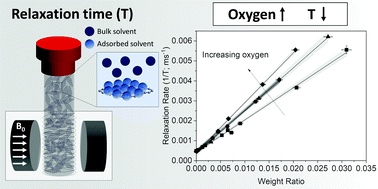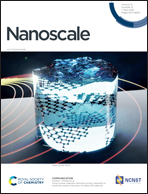Using nuclear magnetic resonance proton relaxation to probe the surface chemistry of carbon 2D materials†
Abstract
Nanomaterials exhibit a high surface-area-to-mass ratio, making surface properties key to optimising product performance. However, characterising surfaces at the nanoscale is difficult to achieve, especially as nanomaterials are often in liquid dispersions. Herein, we demonstrate the use of nuclear magnetic resonance proton relaxation for rapid characterisation of the surface chemistry of graphitic materials.

- This article is part of the themed collection: 2021 Nanoscale HOT Article Collection


 Please wait while we load your content...
Please wait while we load your content...